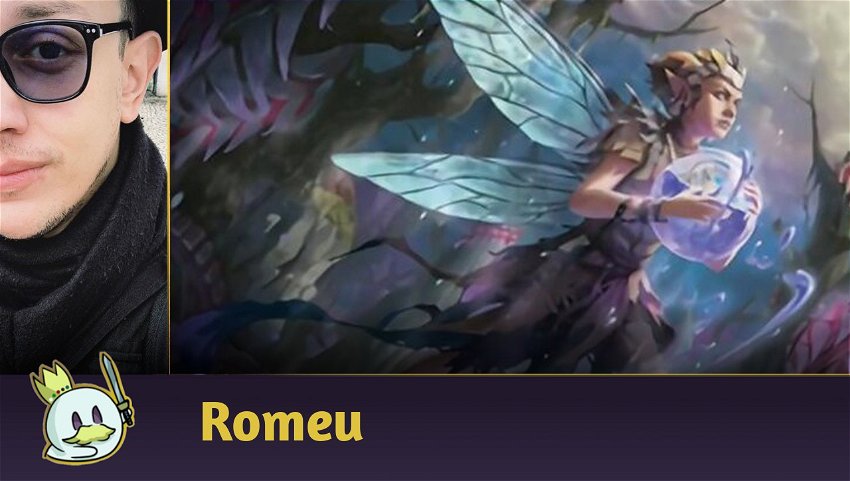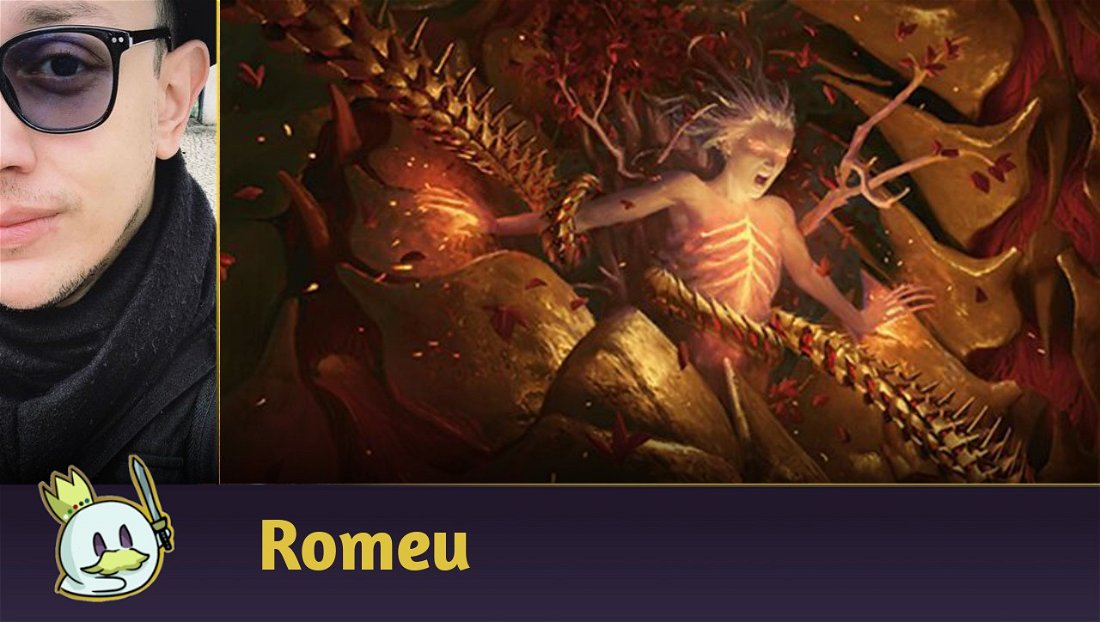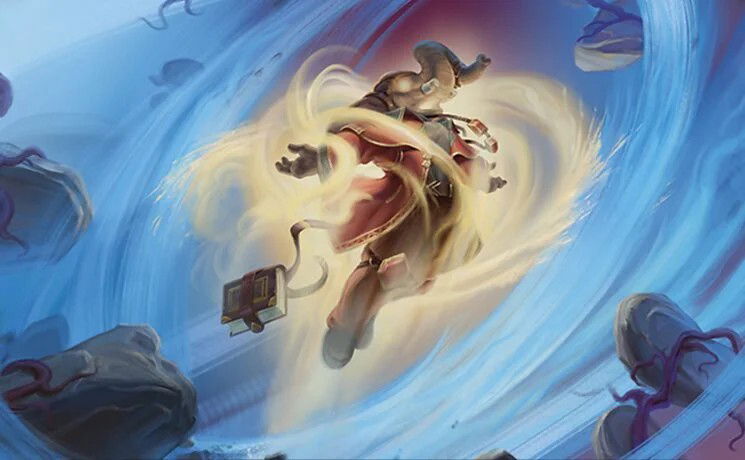In the third part of the March of the Machine review season, we'll be looking at what's new in the set and the potential of its cards in Modern, where the power level is higher and mana efficiency is one of the factors that determine a card's playability in the format.
Battles in Modern
Because they are entirely new to the game, Battles can bring unpredictable effects to the Modern Metagame, or not generate any immediate impact within this release.
As each Battle has an ETB effect and/or an added value, just like in my Pioneer review, I will analyze them based on the value of their effects, rather than the triggered condition if they transform.

However, Modern has cards that interact with defense counters and transform Battles immediately. Therefore, there will be cases where considering the transformation potential is a viable option.
White

As much as I consider Elesh Norn to be March of the Machine's strongest standalone card, its inclusion in Modern seems much more unlikely than in Standard and Pioneer.
In games where her first ability is punishing, like against Burn, casting her on the fourth turn means you're already ahead in the game. And if that's not the case, playing a creature with no immediate impact and/or that doesn't grant you an extra breath, or grants a way to lock the board, isn't an ideal strategy for the current Metagame.
The transformation into The Argent Etchings doesn't seem very viable either, besides being too susceptible to Prismatic Ending and/or Leyline Binding.

Phyrexian Censor is a good variant of Archon of Emeria in matchups where the battlefield matters as much as the number of spells cast. His 3/3 body allows him to survive well in combat.
In a vacuum, Archon of Emeria seems more prone to Modern given its interaction with non-basic lands, but Phyrexian Censor might deserve a slot in your collection, particularly in Aether Vial decks.

Surge of Salvation is perhaps March of the Machine's most important card for Eternal formats. It is not at the same power level and protection as Veil of Summer, but it operates just as well on archetypes that desire this effect.
Its first advantage against the Modern Metagame is that it is a built-in protection against Fury for Aggro decks. Also, ensuring hexproof for you and the permanents you control means having an extra layer of protection against Grief, or specific hates like Force of Vigor against Hammer Time.
This spell also prevents damage from black and red sources, enabling some minor combat tricks, or even an "extra turn" against Burn, Death's Shadow, or Rakdos Evoke.
Due to the countless possibilities it opens up and its almost certain space in the maindeck and/or sideboard of some of Modern's main archetypes, I consider Surge of Salvation to be the best March of the Machine card for the format!

Honorable mention. I imagine some scenarios where having Invasion of Gobakhan available as a "temporary discard" for white decks could make a difference in a Metagame focused on combos and/or key pieces.
Blue

Honorable mention. With Counterspell available in Modern, there's little reason to play with Change the Equation, but there will be situations where it enters the maindeck and/or sideboard of archetypes that run Jegantha, the Wellspring.

Chrome Host Seedshark is not a Shark Typhoon for three mana. Needing to pay an additional cost to put pressure on the board is no small feat in such a mana efficient environment, and most lists where I imagine it would do better off playing Monastery Mentor.

Faerie Mastermind isn't a weak card, and there's a lot of potential in it in a format with Ledger Shredder and cheap cantrips. However, this creature plays very poorly against Wrenn and Six and trades negatively against most of Modern's creatures.

Rona, Herald of Invasion interacts with some parasitic combos involving Mox Amber.
She, the artifact, and Kethis, the Hidden Hand grant infinite looting, as she also interacts with the Underworld Breach with Emry, Lurker of the Loch and Mox Amber loopings. And it all ends with a way to cast Thassa's Oracle and win the game.
I don't think the combos with her are better than the ones with Underworld Breach and Grinding Station, but I recognize the possibility of underestimating her potential in Modern, or that future releases turn her into a good combo engine.
Black

With Infect seeing occasional results, and a Golgari variant of it being favored in the Metagame due to Phyrexian Crusader's "Protection from the format's main removals", Grafted Butcher deserves an honorable mention for its potential to make a board with more than one creature become threatening to the opponent.
A Phyrexian Crusader next to Inkmoth Nexus and/or Glistener Elf grants five poison counters the turn Grafted Butcher comes into play. So, while it's not the most optimized play that Infect wants to make, its support for the Phyrexian type makes it worthy of honorable mention.

Pile On costs too much for its effect. But, we can't underestimate a flexible removal that can be cast for up to one mana, and perhaps it deserves Sideboard slots for archetypes that have enough creatures to cast it for cheap.
Red

Khenra Spellspear is a decent creature for Mono Red Prowess, where the archetype doesn't have access to Sprite Dragon.
Unlike Kiln Fiend, Khenra Spellspear interacts with Mishra's Bauble's recent "combo" with Underworld Breach, where its controller uses the cards in their graveyard to cast the artifact repeatedly, and triggers multiple instances of Prowess in a single turn.

Lithomantic Barrage is a pretty solid answer for the Metagame today.
For one mana, and with no window for answers, you deal with Teferi, Time Raveler, Ledger Shredder, Omnath, Locus of Creation, all threats from Azorius Control, and even the Ragavan, Nimble Pilferer from a careless opponent who cast it thinking they were safe with a backup Counterspell.
It will be worth a slot on the Sideboards on most occasions where Fry would be a viable option.

Despite the hype, Urabrask doesn't seem good enough for Modern as it takes too much work to run, which makes it inferior to Baral, Chief of Compliance or Birgi, God of Storytelling in Storm decks.

Honorable mention. Invasion of Kaldheim's ETB doubles the number of cards in your hand if you're running a combo turn. Four mana seems like a steep cost by the format's combo standards, but its effect is strong enough to deserve a space in this article.

Invasion of Tarkir deserves some tests on Izzet Murktide, as it synergizes with two of the main creatures of the archetype: it increases the chances of enabling Dragon's Rage Channeler, while we can reveal Murktide Regent from our hand to increase its damage.
I don't consider it a staple, but of all the Battles released in this set, it is the most cost-effective for one of the format's most famous decks, and its transformed side, Defiant Thundermaw, guarantees a recurring removal and/ or a relevant pressure in the following turns.
Perhaps, this tech only works in Legacy, where we can use Chain Lightning to turn Invasion of Tarkir into a creature quickly.
Green

Atraxa's Fall is the most flexible artifact and enchantment removal in recent times. In addition to dealing with Battles, should they become relevant, this spell also destroys other important targets, such as Murktide Regent, Leyline Binding, Sigarda's Aid, Fable of the Mirror-Breaker and Amulet of Vigor.
Being a sorcery detracts from its viability in Modern, but its range of legal targets will give it spot space on some sideboards.

Deeproot Wayfinder interacts with Urza's Saga and Fetch Lands, but requires too much effort to work in a color where Modern already runs Wrenn and Six, which doesn't need to pass through the combat phase to offer you that same recursion.

Another of the best cards in the set for Modern, but for a specific strategy.
Ozolith, the Shattered Spire does everything Hardened Scales decks are looking for. It works as extra copies of the deck's namesake card, it is an artifact, and therefore, interacts with other pieces of the archetype, such as Arcbound Ravager, it has a mana sink ability that collaborates in not spending turns doing nothing, and has cycling, so its controller doesn't get stuck with copies in their hand.
Its added value for this strategy is so high that it's hard to imagine that at least two copies won't make it to the maindeck. However, I'm not well-versed enough in Hardened Scales to say what should go off the list.

My review of Wrenn and Realmbreaker on almost every competitive format is pretty skeptical.
The fact that it costs two green mana is a minor aggravation in a format with Fetch Lands, and having an army of 3/3 creatures with hexproof can win games alone, but the problem I see with this Planeswalker for Modern is that its recursion effect is very limited, and while it interacts well with Wrenn and Six, what other cards can we pull off to add it to the main archetype that would be interested in it, the Goodstuff decks?
Fable of the Mirror-Breaker seems like a better option, Teferi, Time Raveler is an essential iteration for the Metagame today, and which flex slot are we willing to give up to add another three-drop?
I wouldn't be surprised if my review of Wrenn and Realmbreaker turns out to be wrong, and it turns out to be significantly better than it looks.

Invasion of Ikoria enables a "one card" combo with Vampire Hexmage, where you cast the Battle for X = 2, fetch the vampire from your deck and put her into play, and use her to transform Invasion of Ikoria into Zilortha, Apex of Ikoria, an 8/8 creature with Reach, that allows non-human creatures to deal combat damage as if they weren't blocked.
Four mana for an 8/8 with no immediate impact isn't what we expect from a combo to win games in Modern. However, Invasion of Ikoria is a tutor in the vein of Finale of Devastation, and deserves a review for its individual quality, rather than just as a combo piece.
The main Finale of Devastation deck today runs it to seek out Asmoranomardicadaistinaculdacar, which Invasion of Ikoria can't find because it's a Human. Therefore, we would need a more efficient and interactive basis for the Battle to get the most out of it.
Perhaps the best option is a strategy that takes advantage of these new card types, such as decks with Tarmogoyf and Dragon's Rage Channeler alongside cheap disruption, or an efficient toolbox deck that can find the combo while relying on other valuable engines to close the match.
Note, however, that Zilortha, Apex of Ikoria has a big enough body to survive against Unholy Heat and Fury, so in the right shell, having it in play quickly can win games on its own. On the other hand, just as Crashing Footfalls doesn't work from Suspend against Teferi, Time Raveler, the other side of Battles cannot be cast if this Planeswalker is in play.
Multicolored

Like Arcane Proxy, Halo Forager lets you cast spells with no mana value, such as Living End and Crashing Footfalls, without paying their cost. And because it's black and blue, this creature is a perfect pitch for Grief or Subtlety, making it an ideal choice for Living End decks.
Another relevant point of Halo Forager is that its ability allows you to cast a card from a graveyard, that is, you can target cards in your opponent's graveyard. This has important implications, for example, casting it on a mirror of Cascade archetypes to play the spell from your opponent's graveyard without paying its cost, or turning the game around in a mirror match.

Because the trigger of Kroxa and Kunoros is an ETB, it allows an infinite self-mill combo alongside Altar of Dementia, where its controller can sacrifice it in response to the trigger, mill six cards, and use five to return Kroxa and Kunoros to the battlefield, creating a loop. The last trigger can then return Thassa's Oracle to the battlefield to win the game.
I don't consider this combo as more efficient than Grinding Breach, nor do I see this pair of creatures as a more efficient target for Persist or Indomitable Creativity than Archon of Cruelty or Atraxa, Grand Unifier. So, I don't have high expectations for this card's potential in Modern.

Honorable mention. Invasion of Alara has a powerful ETB effect for Goodstuff decks, where almost every spell revealed by has a huge impact on the game.
Artifacts

Despite having more potential in Legacy, Sword of Once and Future brings important protections to a Stoneforge Mystic package. Depending on the archetype, this equipment can produce a high amount of value next to cheap spells like Expressive Iteration.
However, "Stoneblade" decks, except for Hammer Time, which is a combo strategy, have been down in Modern for some time now, and there are currently no expectations for Stoneforge Mystic to return to the top of the format outside a combo shell.
Conclusion
March of the Machine brings some useful additions to Modern, where Surge of Salvation stands out for its potential as one of the best archetypes in the Metagame, as well as its comprehensive responsiveness against a portion of other competitive decks.
Other pieces, which can impact the maindeck or sideboard of specific archetypes, also stand out as part of this set's differential. As for Battles, despite having potential, they are still unknown in the competitive scene, and although some of them have efficient payoffs, most seem too limited for the format's standards.
Thanks for reading!













— تعليقات 0
, ردود الفعل 1
كن أول من يعلق